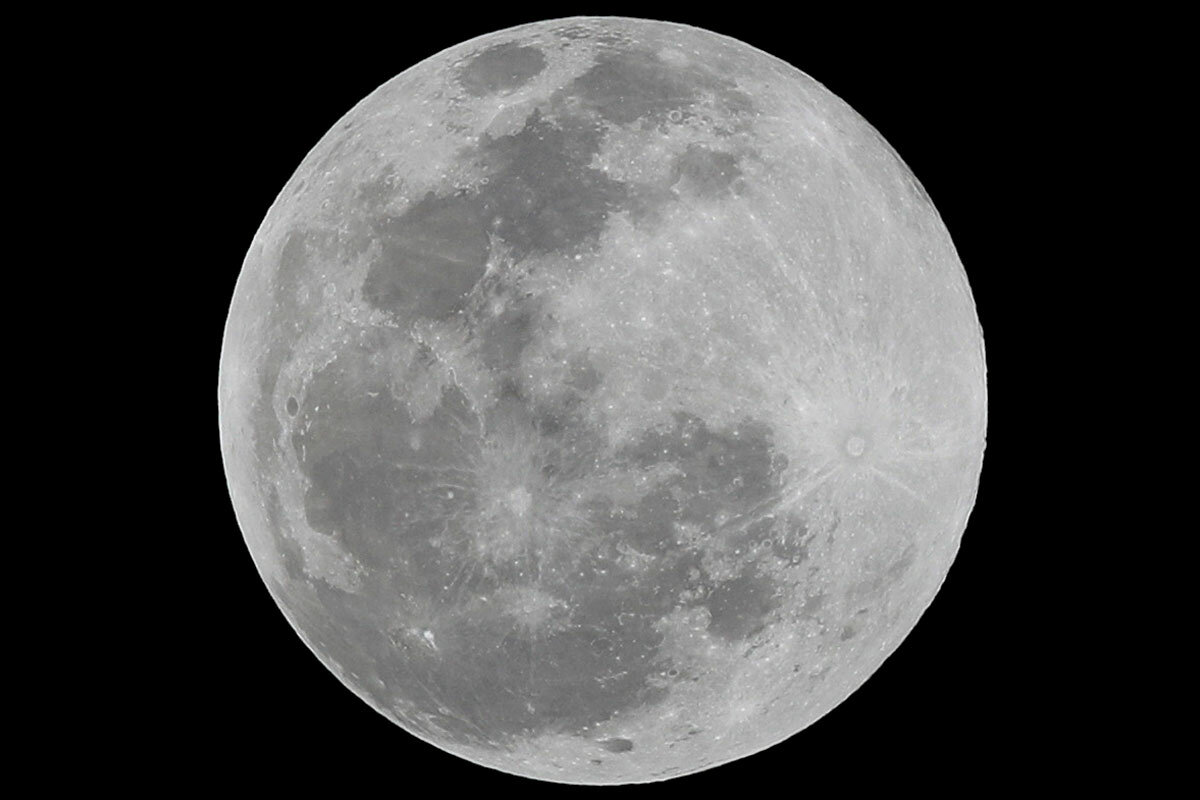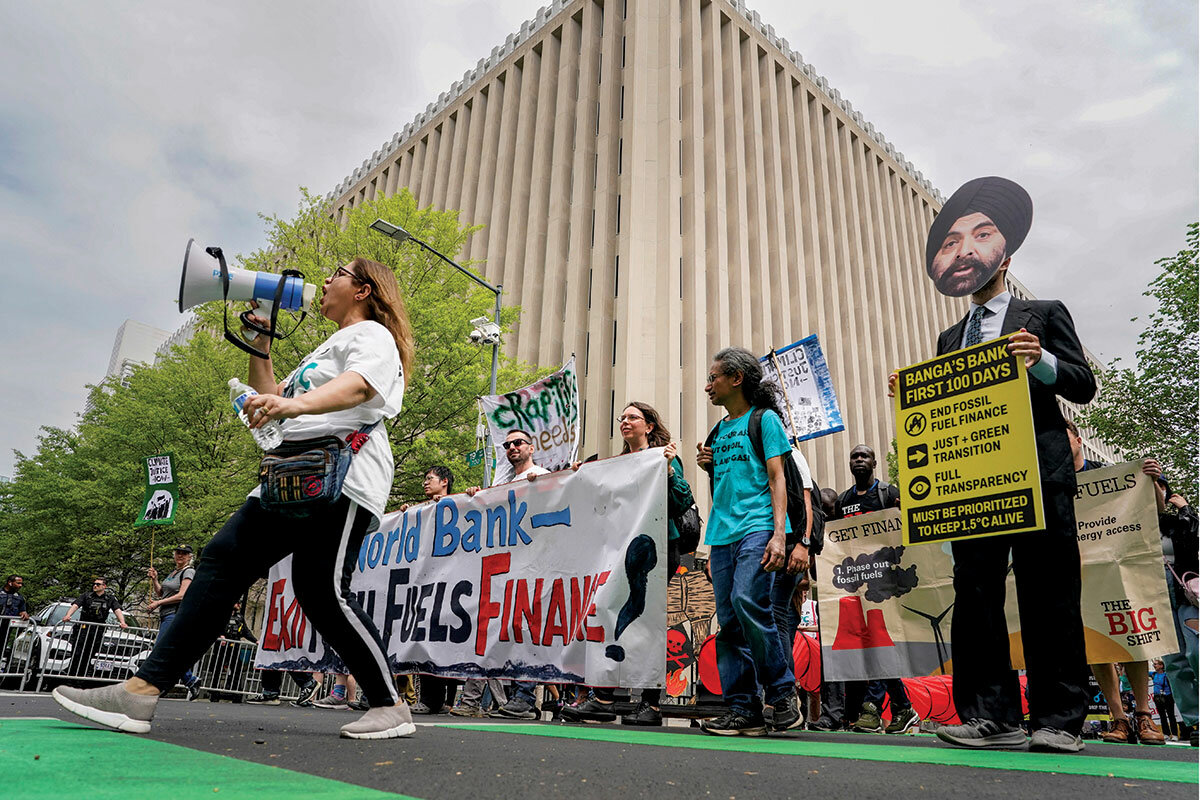Damage control: How the World Bank reformed and Brazil curbs illegal gold
Loading...
1. United States
A recent study answers a critical question about moon exploration: Where is the water? Scientists examined data from the now-retired Stratospheric Observatory for Infrared Astronomy, a partnership of NASA and the German Space Agency, which showed them how water is moving across the moon’s surface.
By tracking water’s unique light signature, researchers have been able to piece together a detailed map of water distribution on the Earth-facing side of the moon’s south pole region.
Why We Wrote This
A story focused onIn our progress roundup, efforts to protect people who have less power range from Brazil’s ID process for illegally mined gold, to World Bank reforms that acknowledged the voices of people the bank meant to help.
Experts have known for over a decade that water exists on the moon, but the study reveals lunar water in colder, shadier places such as crater rims. Scientists continue working toward understanding where the water comes from.
Humans have not landed on the moon since the 1972 Apollo 17 mission. The VIPER rover will study the moon’s south pole next year, and Artemis III is scheduled to land a four-person team including the first woman and first person of color on the moon in 2025. Understanding lunar water could be critical toward the goal of establishing a long-term presence on the moon.
Sources: The Planetary Science Journal, NASA
2. Brazil
A “gold library” is aiding efforts to crack down on illegal mining in the Amazon. The Ouro Alvo program established a database of gold samples from throughout the 1.2 billion-acre forest. With the samples, experts are able to determine unique characteristics of the metal from different mining regions, which allows authorities to confirm illicit hauls.
For decades, “wildcat” mining has wreaked havoc on the environment and Indigenous people, which was hastened by friendly policies of previous President Jair Bolsonaro. One study estimates half the gold – 229 tons – produced and exported from Brazil between 2015 and 2020 was “of dubious origin.” In northern Brazil’s Yanomami Indigenous territory alone – where no commercial activity is allowed – an estimated 20,000 illegal gold miners are at work. Mining there destroyed 1,782 hectares (4,403 acres) last year, a 54% increase over 2021.
In 2020 the database was used to help Brazilian officers seize 77 pounds of gold – worth around $2 million – from alleged smugglers traveling to New York. To increase transparency in the gold market, experts recommend data sharing across agencies.
Mongabay, Reuters, NBC News
3. Azerbaijan and Tajikistan
The World Health Organization has certified Azerbaijan and Tajikistan free of malaria. Public health programs employed insecticides, bed nets, and health worker education. Water-intensive agriculture required years of improvements to irrigation systems and interventions like mosquito-eating fish. Azerbaijan last had a case of malaria in 2012. Tajikistan saw its last case in 2014.
WHO initiatives begun in 2017 and 2021 have targeted 46 countries for malaria elimination. A preventable disease spread through mosquitoes, malaria remains a significant challenge especially in sub-Saharan Africa, where deaths of children under 5 contribute two-thirds of the more than 400,000 malaria-related deaths annually. WHO officials stress the importance of continued surveillance and funding to maintain elimination of the disease.
“Their accomplishment is further proof that, with the right resources and political commitment, eliminating malaria is possible,” said WHO Director-General Tedros Adhanom Ghebreyesus.
Azerbaijan and Tajikistan join 40 other countries or territories in being declared malaria-free.
Sources: World Health Organization, Washington Post
4. India
Some 350 villagers in the Himalayas have stable electricity, thanks to India’s first solar-hydro power system. The pumped-storage facility is built on a stream in the village of Hengbung, where the upper reservoir releases water to a turbine below. Solar-powered pumps send the water back up.
The Himalayas provide almost half of the hydropower installed capacity in India, a source the country plans to expand. But outside of Hengbung in the mountainous states, damage to homes and the environment that opponents say is caused by much larger hydropower projects is prompting protests.
Hengbung residents say their much smaller system is reliably supplying power during outages and periods of high demand. While bad weather and landslides cause transmission line and transformer problems here, excess power can feed the grid during monsoons.
Locals were trained to maintain and troubleshoot their facility. “The system is in our hands now; we can run and maintain it ourselves,” said poultry farmer Romi Rai.
Sources: Context, The Diplomat
World
The World Bank is marking the 30th anniversary of an accountability system that has influenced financial institutions around the globe. In response to protests that called attention to social and environmental damages of World Bank-funded initiatives, the World Bank established its independent three-person Inspection Panel in 1993. The panel investigates complaints from community members and provides a vehicle for redress if a project causes harm.
For example, a forestry project in the Democratic Republic of Congo was revised in 2008 to allow local Pygmies to occupy ancestral lands and manage forests using traditional methods. To date, the panel has taken up 164 cases, 28% of which stem from Africa, 22% from South Asia, and 19% from Latin America and the Caribbean. Issues raised include involuntary resettlement, economic development, environmental health and safety, natural habitats, and cultural resources.
Some 25 international financial institutions have since established their own independent accountability mechanisms, which provide compliance audits and resolve disputes. More than 1,800 citizen-led complaints have been filed with these IAMs.
Sources: The Conversation, The Accountability Console, World Bank








